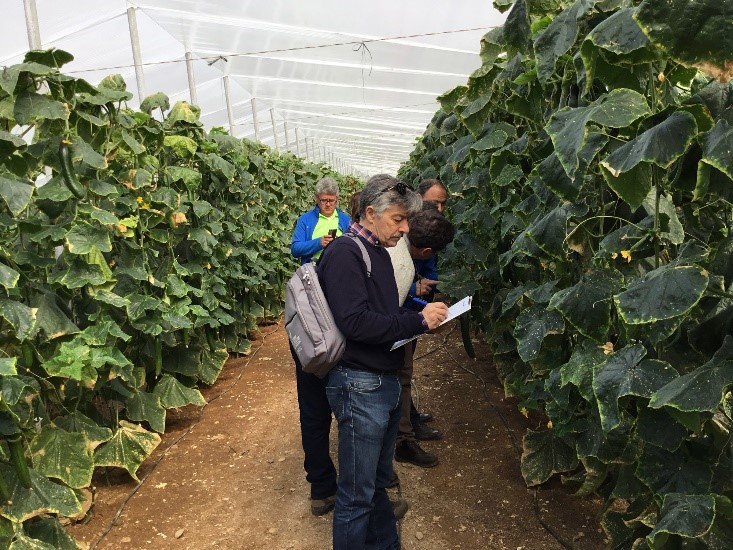In The Pipeline: BASF Seed Solutions
 If necessity, as the saying goes, is the mother of invention, then competition and pressure from customers are the parents of innovation. They are certainly part of the reasons BASF has more than 20 seed-related products at various stages in its development pipeline that will be introduced in the next five years.
If necessity, as the saying goes, is the mother of invention, then competition and pressure from customers are the parents of innovation. They are certainly part of the reasons BASF has more than 20 seed-related products at various stages in its development pipeline that will be introduced in the next five years.
“The industry challenge is coming up with that innovation,” says Mike Hofer, BASF’s Director, Seed Solutions Global Marketing. BASF invests more than $700 million in research and development every year, much of that going to new seed products. “We’re always pushing that envelope and finding that next innovation.”
Those innovations can target a specific problem or region, or it might focus on an issue that every grower deals with — yield, Hofer says. To accommodate those varied needs, BASF offers a broad portfolio that includes seed-applied chemistry, biologicals, inoculants, and coatings. And the company plans on expanding its offerings with a host of new products in the coming years, many of them focused on seeds.
Just last year, BASF launched Obvius, a fungicide seed treatment that helps pulse, podded vegetable and canola growers prevent and control seed diseases. The product contains Xemium fungicide (flaxapyroxad), F500 fungicide (pyraclostrobin), and metalaxyl, which give the seed treatment three modes of action to help control seedling disease pressure. Among the diseases Obvius helps control are Ascochyt
a blight, Pythium, Fusarium, Rhizoctonia, and Botrytis. Currently, the product is available in the U.S.
Need for Innovation
The push to create new products comes from a variety of sources. Sometimes growers or other customers simply want something new or unique. A desire for a new mode of action is often the impetus for innovation.
One constant, of course, is the focus on yield — the need to increase or at least protect and maintain yield against a variety of pest and non-pest pressures, Hofer says. It’s about managing risk and protecting the financial investment growers make.

Mike Hofer, Director, Seed Solutions Global Marketing
A Growing Green Portfolio
One way BASF is helping growers is by offering complements to the traditional crop protection products. BASF enhanced its biological seed treatment offerings when the company acquired Becker Underwood in 2012, Hofer says. With that acquisition came a seed treatment that will be sold under the name Velondis.
Velondis, a new seed-applied biological fungicide with multiple modes of action, will join other BASF seed-applied fungicide treatments such as F500, Xemium and another seed-applied biological fungicide, Integral, shown to extend the window of protection an extra 30 to 45 days.
“We have seen successful results with corn, soybean, wheat and canola,” Hofer says. “This and other technical details will be communicated as we near commercial launch.”
That launch should be sometime in the next five years and will begin in the U.S. and Canada before moving to other regions.
Growers are becoming more technically savvy and continue to push the envelope for more innovative products and to protect their investments in seed. The need for innovation, along with a consumer push for more green solutions, translate into making biologicals one of the fastest growing segments in the past few years.
“BASF and other global agricultural companies are increasingly developing biologicals to complement chemical seed treatments,” Hofer says. “Complementing chemistry with biologicals can not only extend the window of protection but also improve plant vigor and plant health leading to higher yields for growers. If we are to meet the demands of the world’s growing population, we must continue to identify new beneficial strains. It isn’t surprising then that the global market for seed treatments is expected to reach over $5.5 billion by 2020.”
In addition to Obvius and Velondis, BASF is looking to add Tequalis, a biological fertilizer/stimulant that will help various aspects of plant health such as vigor, growth and root architecture, to its portfolio. Like Velondis, Tequalis should be on the market in the next three to four years. It will most likely be available in the U.S. and Europe initially with countries in South America and Asia to follow.
Tequalis has shown effectiveness on corn, soybean and wheat.
Regulatory Issues
Products can take years to develop and test for their effectiveness. Once the efficacy and safety are vetted, companies must have those products approved by the appropriate regulatory body in the country in which the product is to be sold. Biologicals are no different on that account than traditional crop protection products.
“We spend a tremendous amount of time and resources in making sure our product labels abide by the local regulatory needs,” Hofer says. “It’s been a matter of course that we continue to develop products that meet the regulatory environment.”






